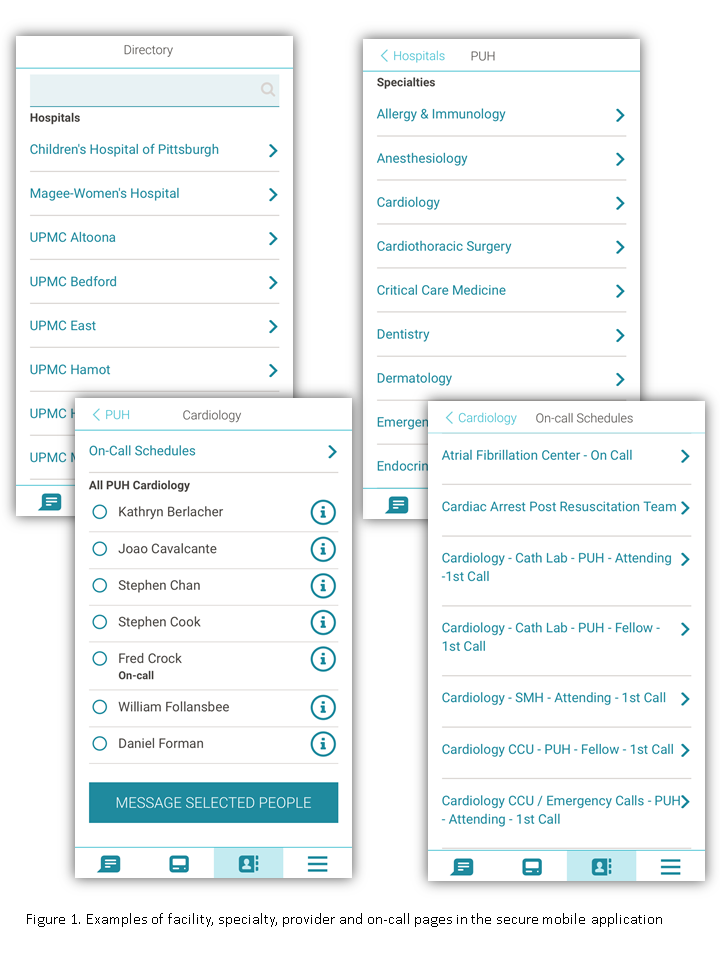Background:
Mobile phones enable efficient communication between healthcare providers. These devices also have the advantage of providing faster information retrieval at the point of care. Many hospitals still rely on outdated pager technology that allows only for unidirectional communication. If text messaging contains decisions about patient care both forms of communication technologies must ensure adequate privacy and security of the information exchanged.
Purpose:
The objective of the project was to implement a secure mobile platform complemented by a desktop application with the goal to enhance provider-to-provider communication.
Description:
In May 2015, we deployed a secure messaging application available for both iOS and Android operating systems. By the end of September 2015, 500 physicians have installed the application on their mobile devices. With the help of the application, the physicians have access to the call schedule and physician directory across 17 hospitals. The directory entries contain detailed contact information (office phone and fax number, email address and pager number). Users can send a secure message to the mobile device or page directly from the directory. A secure message can be marked as urgent and the sender may request an acknowledgement as well. Importantly, the application enables physicians to take and securely transmit clinical photographs. On average, there have been 50 messages sent per day and 45-75 active users per day (a combination of all possible uses: paging, browsing the directory and sending messages). Our monthly visits to the physician directory included: 338 visits to the facility page, 250 visits to the specialty page, 207 views of the provider page, and 144 visits to the on-call page. In addition to the mobile phone application, we have implemented a secure browser-based access. As of November 2015, fifty percent of the application use was browser-based.
Conclusions:
A secure HIPAA-compliant text messaging and directory lookup application can provide efficient point-of-care exchange of protected health information. It also enables transmission of photo documentation between physicians.
